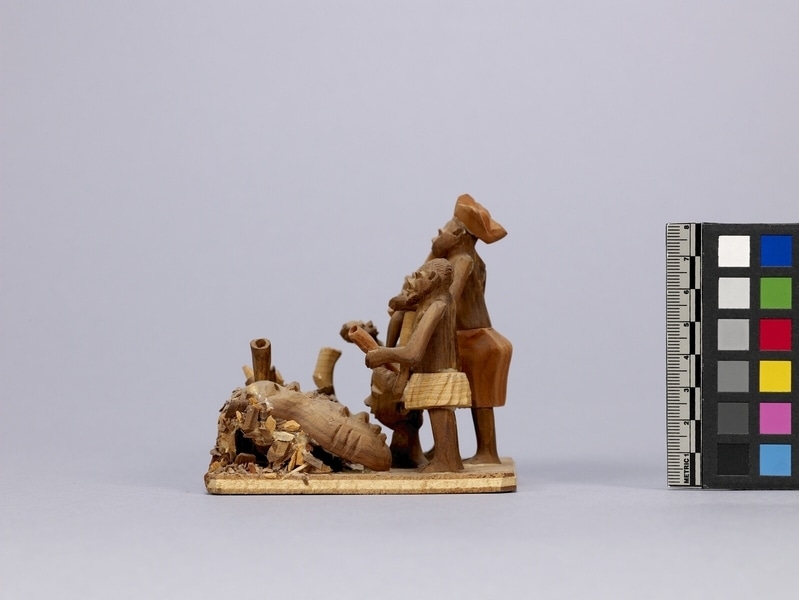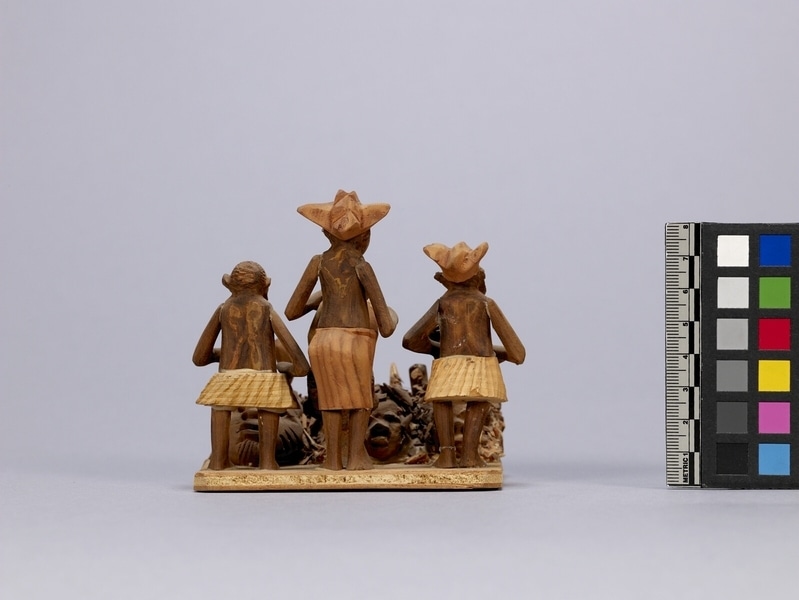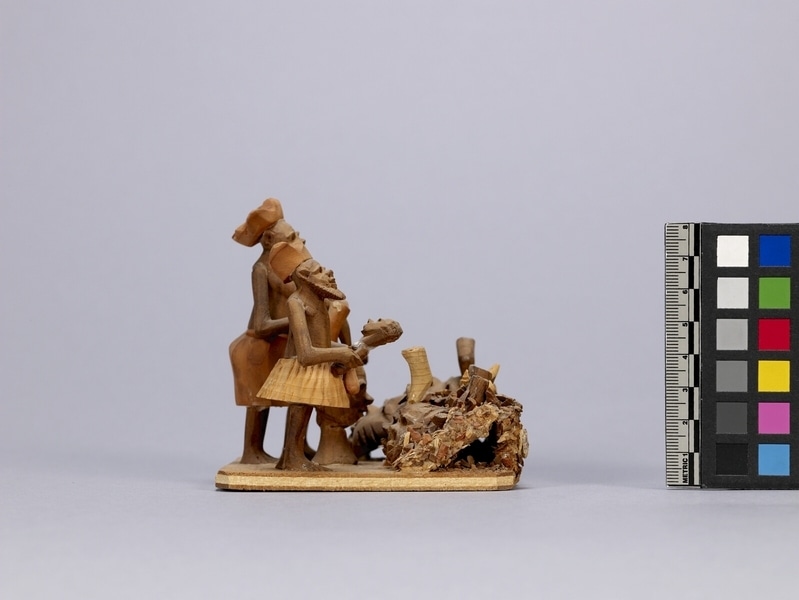Thorn Carving Item Number: Af367 from the MOA: University of British Columbia




Description
Three figures representing people standing in front of a shrine. Middle figure is a bare-chested woman wearing a knee-length skirt and a cloth hat. On the ground in front of her, facing the shrine, there is a carved head, from which three horn-shaped vessels protrude. Other figures are bearded males wearing short pleated skirts, of which one has a cloth hat and is holding a vessel and a rattle. The vessel is attached to the skirt. Other figure is bareheaded and is holding a vessel attached to his skirt. On the shrine mound, there are seven vessel-like objects resting, one large double-faced mask with a protruding horn and two smaller single masks. One single mask has horn-shaped vessel on top of head with a hole behind. Two hats and five vessels are light yellow-brown. Two hats, the skirt, and four vessels are light red-brown. figures, rattles, seven vessels, double-faced mask, single mask, and head on the ground are dark brown. Thorn chips on mound are variegated. On a wood base.
History Of Use
Thorn carvings are miniatures depicting scenes from Nigerian life. This type of carving began circa 1930. Thorns vary in size. They can be as large as 12.7 cm. long and 9.6 cm. wide. They are comparatively soft and easily carved. The light yellow-brown thorn and the dark brown thorn come from the Ata tree; the light red-brown thorn comes from Egun trees. The parts are glued together with viscous paste made from rice cooked with water. They are carved by men.
Narrative
Represents a ritual.
Cultural Context
craft; tourist art
Item History
- Made in Nigeria before 1972
- Collected during 1972
- Owned by Andrew Stewart and Jessie Stewart before February 8, 1980
- Received from Andrew Stewart (Donor) and Jessie Stewart (Donor) on February 8, 1980
What
- Name
- Thorn Carving
- Identification Number
- Af367
- Type of Item
- carving
- Material
- atum thorn, egun thorn, wood and rice adhesive
- Manufacturing Technique
- carved and glued
- Overall
- height 9.5 cm, width 10.5 cm, depth 10.0 cm
Who
- Culture
- Yoruba
- Previous Owner
- Andrew Stewart and Jessie Stewart
- Received from
- Andrew Stewart (Donor) and Jessie Stewart (Donor)
Where
- Holding Institution
- MOA: University of British Columbia
- Made in
- Nigeria
When
- Creation Date
- before 1972
- Collection Date
- during 1972
- Ownership Date
- before February 8, 1980
- Acquisition Date
- on February 8, 1980
Other
- Item Classes
- carvings & sculpture
- Condition
- fair
- Accession Number
- 0590/0053